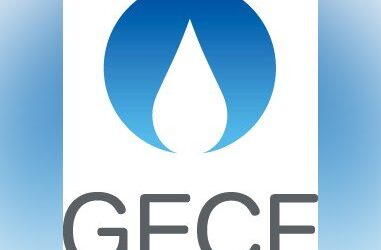“At the country level, LNG demand growth is expected to be led by growing markets in Asia, particularly China and India. The positive outlook for gas in China is forecast to be driven mainly by the residential and industrial sector, thanks to the Chinese government’s policies to improve air quality in the country by switching from coal to gas,” Yury Sentyurin, Secretary- General, GECF, told The Peninsula.
Meanwhile in India, the government has committed to transition towards a gas-based economy and reach 15 percent gas share by 2030. Here, LNG imports have a crucial role to play in meeting India’s growing demand for gas in the future, he added.
“In addition, emerging LNG importers in South and SEA, including Bangladesh, Pakistan, Philippines, Singapore, Sri Lanka, Thailand and Vietnam, which have large populations and lower access to energy resources, have a great potential to drive LNG demand growth in the future,” said Sentyurin.
Qatar has already begun work to increase its liquefaction capacity. The second phase of the planned LNG expansion, the North Field South (NFS) Project, will further increase Qatar’s LNG production capacity from 110 mtpa to 126 mtpa by 2027.
Talking about the gas demand in Asian countries, he said emerging LNG importers in South and SEA, including Bangladesh, Pakistan, Philippines, Singapore, Sri Lanka, Thailand and Vietnam, which have large populations and lower access to energy resources, have a great potential to drive LNG demand growth in the future.
“Domestic gas production in these countries jumped by 62 percent from 161 billion cubic metres (bcm) in 2000 to 261 bcm in 2019, with production peaking at 271 bcm in 2015,” he said.
“Meanwhile, their consumption surged by 127 percent from 133 bcm in 2000 to 237 bcm in 2019. Although the total gas production in this group of countries exceeds the consumption, not all countries are self-sufficient. Malaysia and Indonesia are major LNG exporters, while several other countries depend on gas imports to meet their growing gas demand,” he added.
He said that LNG imports currently account for 13 percent of the countries’ gas consumption and 64 percent of total gas imports. Since domestic production is forecasted to continue declining, while consumption is forecasted to increase, LNG is expected to play a significant role in meeting the future gas demand in these countries.
He said that Kuwait is expected to contribute significantly to the increase in LNG demand in the MENA region. The country’s gas consumption is forecasted to increase significantly in the future, driven by the power and industrial sectors. Although gas production is also forecasted to increase, it is unlikely to be sufficient to meet the growing demand. As such, LNG imports, which currently accounts for 25 percent of Kuwait’s gas consumption, is expected to continue increasing in the future.
“The African continent, particularly Sub-Saharan Africa, is another area for future growth in LNG demand. Major discoveries all over Africa and cheaper LNG processing, transport and regasification technology make it possible to bring LNG to African consumers at a faster pace and a more attractive price than ever before,” he said
He added that some countries in Latin America and the Caribbean, for instance Panama, Jamaica and Colombia, are driving the growth in LNG demand in this part of the world. In 2020, these three emerging economies imported almost two mt of LNG, which represents 16 percent of the region’s LNG imports. Further, the LNG imports represent around 20-25 percent of gas consumption in these countries. More countries in the region could join the club of LNG importers in the future to compensate for declining production and switch from more expensive and polluting fuels (oil products) in the power sector. The gas market liberalisation in Brazil could also support an increase in LNG demand in the short to medium-term.





